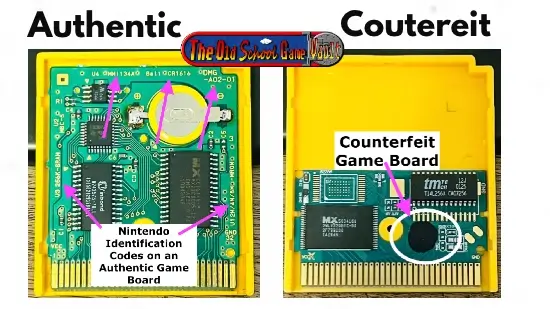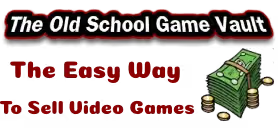Pokémon Yellow: Special Pikachu Edition is one of the most loved Game Boy titles, and because of that it is also one of the most counterfeited video games. Over the years I have seen plenty of reproduction copies floating around online and at game shops.
Some look convincing at first glance, but once you know what to check it becomes easy to separate the fakes from the real thing. Even Nintendo has acknowledged the problem, warning about counterfeit sellers as far back as 1999 (Nintendo Gets Real About Counterfeiting – IGN).
In this article I will walk you through the exact comparisons I made with a genuine cartridge and a counterfeit copy, so you can protect yourself before spending collector prices.
The Table of Contents
First Glance at the Front of Each Cartridge
When I put the counterfeit and the authentic Pokémon Yellow carts side by side, a few things jump out right away:
- The counterfeit shell is a lighter shade of yellow than the genuine game.
- On the authentic cartridge, I can clearly make out the “Nintendo GAME BOY” text at the top. On the fake, it is hard to read.
- The authentic copy in front of me has a small number stamped into the front label. Mine says (54). The counterfeit cart has no imprint at all.
- The label on the fake also has a darker yellow tint, and Pikachu’s color is much darker compared to the genuine version.
Flip to the Back of the Cartridge
On the back, the differences are not as obvious. Other than that lighter shade of yellow plastic I mentioned earlier, both look very similar at a glance.
Not Into Reading - Check Out the The Pokémon Yellow: Real vs Fake Cartridge Comparison (Game Boy) How to Video

Now Let’s Open Them Up – The Game Board
This is where the real differences show.
- The screw on the counterfeit game is noticeably shorter than Nintendo’s genuine screws.
- The reproduction board is tiny compared to the authentic one, and there is no save battery at all.
- The fake board does not have any Nintendo imprints or identification markings. The real Pokémon Yellow board is packed with them: model numbers (DMB-A02-01), chip info (US 256K-SRAM), and the battery type (CF1616).

- On the genuine board, you will see “1988 Nintendo” stamped on the back. The reproduction has inconsistent markings that do not match.
- What really stands out is that the reproduction board is only about half the size. It also uses one of those black epoxy “blobs” you see on many counterfeits. Between that and the lack of proper identifiers, it is obvious this copy is a fake.
Quick Checklist: How to Spot a Counterfeit Pokémon Yellow
- Check the front label. Is there a small stamped or numbered imprint?
- Get yourself a 3.8mm gamebit tool so you can open the cartridge.
- Look at the board. An authentic cart will have a save battery and several Nintendo identification markings, from model numbers to year stamps.
These tips don’t just apply to Pokémon Yellow. You can use them to spot fakes of other original Game Boy cartridges like Pokémon Red and Blue. We also have guides to help you avoid counterfeit Pokémon Crystal cartridges and fake Pokémon GBA games.
Frequently Asked Questions:
How to tell if Pokémon Yellow is authentic?
- Check the front label for a small stamped number, open the cart with a 3.8mm gamebit, and look for a save battery and Nintendo markings on the board.
How to spot fake Pokémon Game Boy games?
- Fakes usually have lighter plastic shells, blurry labels, short screws, and tiny boards without Nintendo identifiers. The differences jump out once you know what to look for.
What are fake Pokémon games called?
- They’re usually called counterfeits, bootlegs, or repros. Collectors avoid them because they’re not official and hold no long-term value.
Do fake Pokémon games still work?
- Some bootlegs will start up, but they often crash, won’t save properly, or just stop working. An authentic cart is always more reliable.



